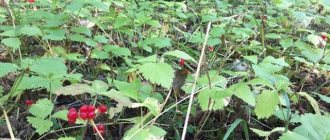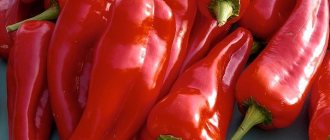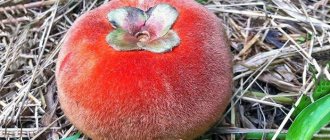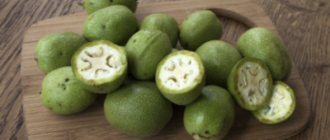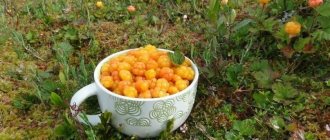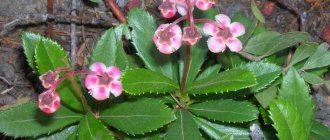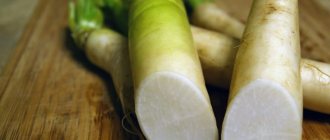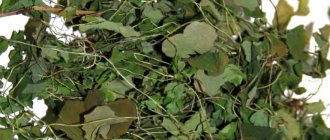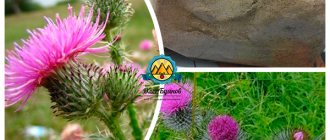general characteristics
Pomegranate is a deciduous shrub, the fruits of which biologists classify as berries. Its ripe fruit is red in color, ranging from 5 to 12 cm in diameter and weighing about 200 g. The peel of the fruit is thick and inedible.
Content:
- general characteristics
- The oldest food?
- Useful components
- Importance for the body
- What can be treated with pomegranates
- Possible dangers
- How to choose and store pomegranate correctly
- How to clean
- Use in cooking
- Application in cosmetology
The interior is divided into “compartments” by thin white partitions that taste bitter. Ripe seeds are very juicy and sweet, usually raspberry in color. This plant is believed to be native to Persia or Northern India. It can reach up to 8 meters in height. Today they are grown as a fruit crop and as ornamental plants. They tolerate drought and moderate frosts well. For industrial purposes, pomegranate is cultivated in India, Iran, Transcaucasia, Mediterranean countries, and American California [1].
What does pomegranate cure? Pomegranate - heals everything!
0
— 4460
I have found, discovered and patented (priority since the end of 1996) a universal natural medicine: an aqueous infusion of dry pomegranate peels.
It cures the following diseases from damage by any strain (in 5 hours or in a week): 1. Dysentery - in 5 hours. 2. Salmonellosis (about 400 strains are known) - in 5 hours. 3. Cholera - in 5 hours. 4. Typhoid fever - 5 hours before. 5. Stomach ulcer - within a week. 6. Intestinal ulcer (small intestine) - within a week. 7. Colitis (large intestine) - within a week. 8. Dysbacteriosis - in a week. 9. Acute appendicitis - within 5 hours and there is no need for surgery. In August 1985, my family and I were caught up in a cholera epidemic on the Sea of Azov, in a boarding house near the city of Berdyansk. With an aqueous infusion of pomegranate peels, I healed my family and neighbors in 5 hours and revealed the treatment recipe to doctors. Within one or two days the epidemic was over. But in the pioneer camps alone, 5,500 children lay with a temperature of 40 degrees and loose stools 15-20 times a day, and medical medications were ineffective. In addition, all the boarding houses were filled with children. The vibrio cholerae mutant “O-157 Bengal” (where the letter “O” stands for cholera) affected children under 18 years of age, and adults felt sick, but they could hardly stand it. There was reason to believe that this was a bacteriological weapon. 11 years later, in 1996, this “O-157 Bengal” raged in Japan for several months, affecting children under 18 years of age. With great difficulty, Japanese doctors coped with the epidemic. Soon, the O-157 Bengal caused an epidemic in the United States, and one can only guess whether it was accidentally imported from Japan, or whether the Japanese intelligence services returned the epidemic to the alleged organizer of the epidemic. But the surprising thing is that the United States was not even indignant or offended by Japan, but only giggled that, unlike Japan, they quickly dealt with the epidemic. The patenting of the drug (1996) was preceded by a mandatory test in a medical institution of its ability to suppress pathogenic bacteria “in vietro” (in vitro). At the same time, 1 ml (1 g) of aqueous infusion of pomegranate peels killed: 1) 1 billion (109) cholera microbes; 2) 0.1 billion (108) salmonella microbes; 3) 0.1 billion (108) dysentery microbes. I am sure that 1 ml of aqueous infusion would kill 10 billion microbial cells, and I asked for this. They didn’t allow me such a quantity, explaining that they had already concentrated the equivalent of an atomic bomb in Moscow. And even then we reached these numbers on the second run. After 106-107 (0.001-0.01 billion) microbial cells were killed, doctors did not believe it, believing that this could not be, and wanted to double-check. When drawing up the protocol, they bashfully asked for my permission not to make a mandatory comparison of the new drug with the best existing ones in the protocol, and the best existing ones (in vietro) killed 105 (hundreds of thousands) of microbial cells. The new drug is 3-4 orders of magnitude superior to them. And if we take into account that 1 ml of aqueous infusion contains 1-2 orders of magnitude less active substances than the best medical preparations, then the superiority of the new drug over existing ones will be 5-6 orders of magnitude, i.e. 1 million times better. Anyone who has studied physics knows that the superiority of the new over the old by 2-3 orders of magnitude means the discovery of a new effect in science, and in this case, a superiority of 5-6 orders of magnitude. Chemicals (such as antibiotics) kill everything, both pathogenic bacteria and (essential) healthy bacteria and body cells, forcing the body's immune system to fight with the body itself for survival. The advantage of the new natural herbal preparation is that it selectively kills only pathogenic bacteria and does not cause any harm to healthy bacteria in the stomach and intestines. Examples of this: treatment of dysentery, cholera, stomach ulcers, intestinal ulcers, dysbacteriosis, etc. The authorities of medical science, both ours and foreign, have long said and written in numerous medical literature that the creation of universal drugs is impossible and that it is necessary to select ( create) a medicine for each strain (a person is tormented by a disease, and they determine which strain and how to treat it). I have proposed the world's first universal herbal preparation, which effectively suppresses any pathogenic bacteria in the entire human gastrointestinal tract, regardless of their strains and mutations, including those that may appear hundreds and thousands of years later. This drug completely and very convincingly refutes the opinions of these scientists, regardless of whether anyone likes it or not. This is a world-class discovery in medical science. This discovery gives medical science the right direction in developing future drugs. This is a turning point in the history of the development of medical science and medicine. And not to recognize the discovery on the part of scientists means to sign of one’s incompetence, unprofessionalism and ignorance, and at the same time to get stuck in the history of the development of medical science and medicine, exposing oneself to the ridicule of both current and future generations. After receiving a patent for the treatment of dry pomegranate peels with an aqueous infusion (1999), I turned to the pharmaceutical committee of the Ministry of Health with a request to allow the use of this natural drug, including for a new purpose, since the doctor Hippocrates treated dysentery with it. Information about this is contained in the scientific literature of the USSR Academy of Sciences and other publications. Which I was denied because the pomegranate plant is not contained in the State Pharmacopoeia (there is oak, birch too, but no pomegranate). The physician Hippocrates cured dysentery in 5 hours about 2500 years ago. Modern medicine cures dysentery in 100 times longer. Consequently, in the treatment of this disease alone, our medicine has degraded 100 times over 2500 years. What about other diseases? Isn’t our medicine approaching 2,500 times the degradation of the treatment of some other diseases? But, judging by the incurable HIV infection and AIDS, we have approached not only 2500 times, but even reached infinity. After that, I wrote a long article “The Forgotten Hippocrates and Plant Treatment”, newspaper “Russian Bulletin”, No. 50-51, 1999. A quarter of a century ago, in the Russian State Library (RSL, but then it was called differently), I read the report of American scientists according to research and testing of science itself, commissioned by large US businesses. As US scientists have found out, in any science the number of people with high creative potential (i.e. those who really brought something new to science) ranges from 1% to 1.5% of scientists. The remaining 98.5-99% of scientists are people with low creative potential or, as they called them, drones in science. These scientists are not able to bring anything new to science (in Russia they have long said: he has God’s gift or they are without God’s gift). In the future, for brevity, we will talk about 1% and 99% of scientists, and this is closer to the truth, since many of this 1% were forced to take on as co-authors their leaders, bosses, etc. This 1% of scientists with high creative potential are, as it were, pre-programmed for the great success of the business that they themselves have chosen, and with minimal expenditure of funds for the company. Scientists with low creativity (99%) often drag firms into large, expensive projects with unpredictable or questionable results. And some of these 99% of scientists are prone to expensive, outright adventures in science. Training one scientist in the USA costs many hundreds of thousands of dollars, but here for every one real scientist there are 99 drones in science. In the USA they tried to save money on these drones in science. The total number of scientists was reduced by 2 times, and especially gifted people who showed themselves at Olympiads and graduated with honors from schools and institutes were given a vertical lift into science. After enough time had passed, they summed up the results and shed tears. Again, the ratio was 1% and 99%, but the total number of scientists was reduced by 2 times, and lost by 2 times, because the number of scientists with high creative potential was also reduced by 2 times. They concluded that there is some fundamental, unknown law of nature here, in which drones are also necessary. They decided to restore the previous number of scientists. And the number of scientists with high creative potential should be increased to 2-3% by buying up scientists with high creative potential in other countries for very big money (not those who show diplomas with scientific degrees and titles, but those who have already made a significant contribution to science). This expensive brain buying is much cheaper than maintaining an entire army of 99% drones in science. Moreover, these people are paid extremely high salaries, even by US standards. And 99% of scientists, uniting, occupy high leadership positions in science and industry. Unlike them, the 1% are not inclined to unite, and they have no one to unite with. To the direct question of big business: do these 99% help the scientists from the 1%, do they not interfere or interfere, the direct answer followed: they create problems and interfere. They gave recommendations to the heads of large companies: identify these scientists in their company (i.e., from the 1% or gold collar workers), remove all their officials from subordination and subordinate them personally. Pay high salaries and give them the opportunity to do whatever they want (these people cannot sit idle, and their brains are constantly working both at home and at work). Once every 3-6 months, invite such people into your office for a cup of tea or coffee, take an interest in their affairs and find out if they need any help. Even if this person takes up work that is not related to the company’s profile, his work will still ensure the prosperity of the company for the next 20-30 years. Over the years of the existence of the USSR, the USSR State Committee for Inventions and Discoveries in all fields of science (and there are so many of them) registered 205 discoveries in science. It’s hard to even imagine how high the economic price the state paid for each discovery. And the state was proud of these discoveries. And in today's Russia, a discovery was made in medical science, the world's first universal medicine was created, and it turned out to be unnecessary for the state, the Academy of Sciences, the Ministry of Health of the Russian Federation and medicine. Our state is kind of strange, but the Russian Academy of Medical Sciences and the Ministry of Health of the Russian Federation are even stranger. After all, according to statistics, there is one discovery in science for every 500-1000 scientists with high creative potential. —————- I do plant healing. Higher technical education. In December 1999, my article “The Forgotten Hippocrates and Plant Treatment” was published in the newspaper “Russian Messenger” √ 50-51 (444-445), which gives a recipe for my patented method of curing dysentery, cholera, salmonellosis with an aqueous infusion of dry pomegranate peels in 5 hours. My article “How to get rid of HIV infection and AIDS and what it is” was published in the newspaper “Russian Bulletin”, No. 17-18 2007. It mentions the quick cure of dry pomegranate peels with water infusion: 1. Cure in 5 hours from any strains of dysentery, salmonellosis, typhoid fever, cholera, acute appendicitis (there is no need for surgery). 2. Cure in one week from the following diseases: stomach ulcer, intestinal ulcer (small intestine), colitis - an inflammatory process in the large intestine, dysbacteriosis. At the request of readers, I give a recipe for preparing a water infusion of dry pomegranate peels and its use. The approximate weight ratio of dry pomegranate peels and boiling water is 1:20. Place approximately 10-12 g of dry pomegranate peels into a preheated cup, glass or glass jar and pour 200 ml of boiling water over them (you can pour 200 ml of raw water into this container, add 10-12 g of pomegranate peels and bring to a boil with an electric boiler, but do not boil). Cover with a saucer or paper folded in 4 layers. Leave for 25-30 minutes and you can start drinking. Do not throw away the crusts; the infusion continues. As soon as the peels were poured with boiling water, the treatment began, and during these 25-30 minutes of infusion, the container with pomegranate peels should be located next to the person being treated. Preparation of an aqueous infusion of dry pomegranate peels for the treatment of all listed diseases is the same. Application is different. I. To cure in 5 hours from 1) dysentery; 2) salmonellosis; 3) typhoid fever; 4) cholera; 5) acute appendicitis - use the water infusion as follows: 1. After infusion for 25-30 minutes, drink about half the liquid (half a glass). Do not strain the infusion; the infusion continues. And cover with the saucer again. If 10 minutes after this you feel healthy, then it was a normal stomach upset (diarrhea) and it is completely cured. You can safely go on any trip, because you will not have diarrhea or constipation. 2. If after 10 minutes you do not feel recovered, then you either have dysentery, or salmonellosis, or typhoid fever, or cholera. You need to stay at home and drink the remaining water infusion after 3 hours. The treatment process lasts 3 hours (with infusion 3.5 hours), and recovery occurs 5 hours after the start of treatment. II. To cure in 1 week from: 1) stomach ulcers; 2) intestinal ulcers (small intestine); 3) colitis (inflammatory process in the colon); 4) dysbacteriosis - use an aqueous infusion of dry pomegranate peels as follows: 1. After infusion for 25-30 minutes, start drinking. During the day, drink about half of the water infusion (90-100 ml) in 4 doses in approximately equal portions and at approximately equal intervals, i.e. approximately 20-25 ml per 1 dose. Drink on an empty stomach, with the 1st dose in the morning, after sleep, and the 4th dose at night, before bed. 2. Drink a water infusion not every day of the week, but every other day, i.e. on days of the week 1, 3, 5, 7 - drink the infusion, and on days 2, 4, 6 - do not drink the infusion (rest from treatment). 3. This is enough for a complete cure. But if someone, to be on the safe side, wants to continue treatment, for example, for a stomach ulcer, then they can repeat the weekly course of treatment no earlier than a week later. 4. During the treatment process, do not strain the water infusion - the infusion continues. 5. During this treatment, alcohol is contraindicated, and especially contraindicated on the days of taking the water infusion. 6. The essence of the treatment is that all pathogenic bacteria are constantly suppressed throughout the gastrointestinal tract (healthy bacteria are not suppressed) and their locations are successfully colonized by healthy bacteria necessary for humans. 7. In addition to the above, it is known that Hippocrates treated cut and puncture wounds with this water infusion. A clean (cotton) cloth, previously moistened in an aqueous infusion of dry pomegranate peels, was applied to the wound. This cloth was kept constantly damp until the wound healed. G. I. DEEP
0
Related:
- Autumn Grandfathers (October 19 - 26)
- Oak in the yard - food on the table
- The biological clock of our body is the pineal gland (epiphysis)
- Chanterelles - an ancient method of cleansing from parasites
- Licorice is a plant created to cleanse and renew the lymphatic system!
New articles
- Ammonia against insects and more...
- Useful properties of strawberry tails and preparing them for the winter
- What can be made from acorns
- How to make tea from twigs
- Cleansing blood vessels with folk remedies
Latest articles
- Soulful Russian tea party
- Tea with hops: tasty and healthy
- How to make healthy barley tea
Add a comment
The oldest food?
The name pomegranate comes from a medieval Latin word that can be translated as “apple with seeds.” These fruits are mentioned in many ancient texts, including the Torah, Koran, Mesopotamian records and the books of Homer. Historical researchers suggest that the first pomegranate trees grew in the territory of modern Iran, then the plant spread across the lands that now belong to Iraq, Afghanistan, Pakistan, India, and Russia. It “emigrated” to the shores of the Mediterranean Sea and the Far East, and was found along the historical Great Silk Road. In those days, the pomegranate was considered a symbol of abundance and offspring.
Archaeologists have found charred remains of pomegranate fruits in settlements of the Early Bronze Age (which is almost 3000 BC). Grenades were found in Jericho, Cyprus, in the tomb of Tutankhamun. By the way, these fruits were regularly supplied to the pharaohs’ tables, and the plant itself was considered a symbol of life after death. Already in those days, pomegranate juice was used as a remedy for parasites, skin dye and for cosmetic purposes.
Images of pomegranates were also found on the pillars of Solomon's Temple in Jerusalem, on the ancient robes of Jewish clergy, and on the mosaics of Ancient Rome, where this plant was called the Phoenician apple. Ancient Roman women wore a sprig of pomegranate to indicate their marital status. In Zoroastrian temples, this fruit symbolized eternal life and fertility. In Persia it was considered a symbol of strength, and Buddhists considered it one of the three blessed fruits.
Pomegranates have occupied a leading place in many world religions. The Greeks spoke about him in their legends, he was revered by Jews, Muslims, and Hindus. In Christianity it is mentioned as a symbol of the Virgin Mary. This fruit was respected in medieval Europe (used in heraldry and various types of art) and during the Renaissance. He is loved all over the world even today.
Pomegranate seed oil: properties and uses
Not only powder is obtained from pomegranate seeds, but also healing oil - although you can only buy it in a pharmacy, you cannot prepare the remedy at home. The properties of the oil help against high blood pressure, reduce bad cholesterol, and have a beneficial effect on diabetes and obesity.
When used internally, a few drops of the product are kept under the tongue for a couple of minutes and then swallowed - this way the substance is absorbed into the blood faster and better. Externally, the oil is used in cosmetics - it saturates the skin with vitamins and slightly rejuvenates.
Useful components
Pomegranate is a real storehouse of nutrients. But among them there are two, perhaps the most important - punicalagins and punic (or pomegranate) acid. Punicalagins are powerful antioxidants found in pomegranate juice and peel. Their effectiveness is 3 times higher than the beneficial properties of red wine and green tea. Pomegranate acid is mainly concentrated in the peel of the fruit and also has powerful biological properties [2].
Researchers estimate that pomegranates contain more than a dozen beneficial polyphenols, which makes the juice from these fruits much healthier than a drink made from grapes or blueberries.
This healthy fruit contains almost no calories (100 g contains a little more than 80 kcal), which is almost identical to the calorie content of an apple [3].
It contains no cholesterol or saturated fat, but is an excellent source of soluble and insoluble fiber (providing approximately 12% of the daily value). It is a good source of vitamin C, making it useful as an immune booster. Regular consumption of the fruit provides the body with vital B vitamins, as well as many macro- and microelements [4]. Nutritional value per 100 g [5]
| Calorie content | 83 kcal |
| Squirrels | 1.7 g |
| Fats | 1.2 g |
| Carbohydrates | 19 g |
| Cellulose | 4 g |
| Thiamine (B1) | 0.07 mg |
| Riboflavin (B2) | 0.04 mg |
| Niacin (B3) | 0.3 mg |
| Pantothenic acid (B5) | 0.15 mg |
| Pyridoxine (B6) | 0.09 mg |
| Folic acid (B9) | 39 mcg |
| Vitamin C | 10 mg |
| Vitamin E | 0.8 mg |
| Vitamin K | 16.5 mcg |
| Potassium | 235 mg |
| Sodium | 3.2 mg |
| Calcium | 12 mg |
| Iron | 0.35 mg |
| Copper | 0.16 mg |
| Manganese | 0.13 mg |
| Magnesium | 11 mg |
| Zinc | 0.32 mg |
| Phosphorus | 33 mg |
| Selenium | 0.4 mcg |
Chemical composition of pomegranate
To appreciate the benefits of pomegranate, you need to familiarize yourself with the composition. Vitamin fruit contains:
- vitamins A, E, PP, presented in large quantities;
- vitamin C;
- the most valuable folic and pantothenic acids;
- vegetable sugars;
- pyridoxine and beta-carotene;
- thiamine and riboflavin;
- phytoncides;
- tannin;
- organic acids - malic, oxalic, boric and others;
- monosaccharides and disaccharides;
- tannins and nitrogenous substances;
- pectins;
- iron, chromium, calcium;
- potassium, manganese and sodium.
Importance for the body
Anti-inflammatory
Chronic inflammation occupies one of the first places in the spectrum of all human diseases. Pomegranate fruits are characterized by strong anti-inflammatory properties, which largely depend on the antioxidants contained in the fruit. Studies have shown that pomegranates can reduce inflammation in the gastrointestinal tract.
Cancer protection
Pomegranate can protect against prostate cancer. This is what scientists who conducted experiments using the juice of this berry say. It turned out that the substances contained in pomegranate slow down the proliferation of cancer cells, and in some cases even cause their death [6]. Researchers say that men only need to drink 240 ml of pomegranate juice daily to protect themselves from prostate cancer [7].
The fruit is also beneficial for women. Pomegranate juice will protect representatives of the fairer sex from breast cancer - the most common type of cancer among women.
Against arthritis and joint pain
There are different types of arthritis, but they are all accompanied by inflammation in the joints. Considering that the phytocomponents in pomegranates have anti-inflammatory properties, it makes sense to say that these fruits are useful in the treatment of arthritis. Recent laboratory experiments have confirmed that pomegranate extract can block enzymes that cause joint damage in osteoarthritis [8].
Mushroom grenades!
It turned out that pomegranate juice is also useful in the fight against harmful bacteria and fungi. This fruit will also help people with diseases caused by Candida fungi. Thanks to its antifungal and antibacterial effect, the fruit will protect against infections and inflammations in the oral cavity, such as stomatitis, periodontitis and gingivitis [9].
To improve memory
There is ample evidence that pomegranate fruits are beneficial for brain performance, in particular, they improve memory [10].
The experiment showed that drinking about a glass of juice daily is enough to improve verbal and visual memory. In old age, pomegranate juice will protect against Alzheimer's disease. This fruit is also useful for people after operations.
Benefits for the Heart
High blood pressure can lead to a heart attack or stroke over time, but pomegranate juice can help prevent the disease. Studies have shown that it is enough to drink 150 ml of natural juice for 2 weeks to bring blood pressure within normal limits. And pomegranate acid can strengthen the heart and protect it from certain diseases [11]. In addition, juice has been proven by scientists to effectively reduce cholesterol and triglyceride levels, which is also important for health [12].
Effect on erection
Interestingly, pomegranate juice can improve erections in men. An experiment involving 53 men showed that this fruit improves blood flow, relieving symptoms of erectile dysfunction [13].
Benefits for athletes
Pomegranate is rich in chemical compounds that increase the physical endurance of the body. As a result of the study, it was found that if you take 1 g of pomegranate extract 30 minutes before training, the blood supply to the body will significantly improve, which will ultimately make sports more effective and prevent fatigue. By the way, beet juice also gives a similar result.
Health benefits and harms of pomegranate
How pomegranate is beneficial for human health - thanks to the valuable substances contained in pomegranate, it has many healing qualities for maintaining and treating the body. Doctors recommend it for use at any age, because it is considered a natural remedy for the heart, thyroid gland and blood. Among the useful qualities, the following points are highlighted:
- Strengthens the immune system, nervous system and blood vessels.
- Prevents atherosclerosis by removing cholesterol from the body and cleansing blood vessels.
- Promotes hematopoiesis, increases the number of red cells.
- For the prevention of tuberculosis and dysentery: neutralizes the parasitic properties of E. coli.
- Cleanses organ tissues from toxins, harmful elements and waste.
- Lowers blood pressure.
- Useful after surgery with large blood loss, after bleeding, serious illness, exhaustion.
- Prevents the appearance of cancer.
- Helps with anemia, anemia, malaria.
- It has a good effect on digestive processes and increases appetite.
- Useful in the treatment of worms.
- Eliminates inflammation in diseases of the kidneys, liver, joints, and women's problems.
- Removes radioactive elements from the body.
- Lowers blood sugar.
In addition to the beneficial properties of the fruit pulp, the skins have powerful healing properties. They contain twice as much tannins, antioxidants and phenols as pulp. They are used to make infusions, decoctions, and powders to relieve symptoms of colds, dysentery, stomatitis and sore throats.
Preparations based on pomegranate peel act on oxidative processes, cleanse the liver and remove cholesterol. They also produce anti-diarrhea medications to stop bleeding. Pomegranate peels are used to produce drugs for oncology of the breast, skin and digestive organs.
Decoctions, infusions and oil are prepared from pomegranate seeds. Medicines based on them help diabetics and normalize intestinal function. The seeds have anti-inflammatory properties, help with constipation, and participate in metabolic processes.
They can be chewed for severe migraines and menstrual pain. The tannin content in them reduces intestinal motility during diarrhea, eliminates flatulence and prevents the development of diseases of the genitourinary system.
The benefits and harms of pomegranate are related to the volume and method of its consumption. You can eat no more than 100 pomegranate seeds at a time, and add boiled water to the juice or mix it with beetroot, carrot or apple juice. This must be done due to the high acid content in pomegranate. After drinking the juice, you need to rinse your mouth to get rid of the destructive effects of acids on your teeth.
Despite the enormous benefits, fruit peels contain many harmful substances for the human body: alkaloids, pelletierine, isopelletierine. In large quantities, these substances cause allergies, bleeding and intoxication. Therefore, products made on the basis of crusts should be taken in a strict dosage, agreed with the doctor.
Pomegranate seed seeds contain a lot of fiber, so you can eat them, but only if they are soft. In the intestines, they behave like a hard brush because they are not digested, but pass through the digestive system, removing toxins and waste. They contain essential oils that nourish the body with the required vitamins and acids.
It is forbidden for patients suffering from diseases of the digestive tract or low blood pressure to consume fruits with seeds, because essential oils reduce it even more.
Possible dangers
Pomegranate juice is a very acidic product, and for this reason it is absolutely not suitable for people with stomach ulcers and high acidity. Also, pomegranate acid may not have the best effect on tooth enamel. It is not recommended to give pomegranate juice to children under one year of age. Some cautions are also associated with the peel of the fruit: it contains toxic substances and can cause severe poisoning.
Useful properties of pomegranate
Pomegranate consists of seeds (10-15%), juice (65-70%) and peel (15-25%) . The seeds bring almost no benefit, except that they gently irritate the intestines and increase their peristalsis.
The benefits of the remaining components are simply amazing:
- Vitamin B12 is well known to anyone who has experienced anemia at least once in their life . The rapid absorption of this vitamin by the body helps maintain iron levels in the blood of pregnant women and the elderly. This fruit is especially useful for vegetarians, because they do not eat meat at all - the main source of iron in the body.
- Organic acids help the body rejuvenate and quickly restore strength after a protracted illness, surgery or blood loss. A quick recovery and good immunity will be ensured by vitamin C in the fetus. Ascorbic acid is a powerful antioxidant, so the wave fruit can claim the title of rejuvenating.
- The antioxidants in the composition can rejuvenate not only the skin, but also other important organs . The high concentration of antioxidants in the juice blocks the action of free radicals and improves erectile function in men.
- Polyphenols support brain health and improve memory , especially in older adults. In addition, they strengthen the walls of blood vessels, improve blood circulation in general and lower blood pressure.
- Tannins, of which there are also a lot in the peel, are able to cope with E. coli, dysentery bacillus and thoroughly disinfect blood vessels and internal organs. Tannin helps get rid of prolonged diarrhea.
To understand the special benefits of pomegranate for women, it is worth talking separately about the components:
- retinol or vitamin A helps moisturize the skin and slow down its aging;
- folic acid is the main “female” acid that can normalize the menstrual cycle;
- Vitamin E is called the main component of a woman’s youth, because it is it that rejuvenates the body at the cellular level;
- other vitamins in the fetus can stimulate the endocrine system of the ovaries;
- nicotinic acid normalizes hormonal levels, especially during menopause.
The general benefit of pomegranate for the human body is that its components will help:
- increase hemoglobin;
- lower insulin;
- activate hormones;
- disinfect the mouth, throat and internal organs;
- normalize intestinal motility and improve bowel movements;
- lower blood pressure;
- rejuvenate;
- relieve inflammation;
- remove radioactive substances from cells and organs;
- get rid of worms and diarrhea.
How to choose and store pomegranate correctly
It is believed that the most delicious fruits grow in the southern regions of Afghanistan. Ripe fruit is easily recognized by the bright crimson color of its peel, and when tapped with a finger, it makes a metallic ringing sound. Overripe fruits become very hard on the outside and inedible on the inside. Spotted fruits may be hard and bitter. Also, you should not take pomegranates that are moldy, cracked, or wrinkled, and soft fruits are usually rotten inside.
You can store ripe fruits at room temperature for longer, but in the refrigerator they will remain fresh for several weeks. In general, pomegranates have a fairly long shelf life.
Is pomegranate suitable for pregnant and nursing mothers?
The fruit is highly recommended for consumption while pregnant. The benefits of pomegranate for pregnant women are that it protects a woman from colds, promotes the normal development of the fetus, improves the mother’s metabolism, helps cope with anxiety and gives strength. Pomegranate during early pregnancy helps to cope with toxicosis, and pomegranate during pregnancy in the third trimester relieves severe swelling.
But you should be careful with pomegranate during lactation - it can be harmful to the baby. It is better to return it to the diet a few months after giving birth and to start, try only 3 - 4 grains of the fruit. If the baby does not develop allergies, then the dosage can be gradually increased.
How to clean
The average pomegranate contains approximately 1,300 grains. But anyone who has ever tried to separate this fruit knows how difficult it is not to damage them and not to splash themselves with bright red juice. However, there is an easy way to cut pomegranates. At the same time, it guarantees clean hands, clothes, kitchen and cutting board.
To do this, you will first need to cut off the “crown” of the fruit, and then make several cuts along the peel from the place of the “crown” along the fruit. And now the biggest trick: fill a pan with water and put the pomegranate in the water. Already under water, gently stretch the peel with your fingers so that the grains spill into the water. Then drain the liquid and blot the pomegranate seeds with a paper towel.
Medicinal properties of pomegranate peel and membranes
The peel of the exotic fruit, as well as the membranes that separate the grains from each other, can bring benefits. Homemade drinks based on membranes and peels are used to treat:
- nervous disorders;
- inflammatory diseases of the oral cavity;
- irritations and traumatic damage to the skin.
Pomegranate peel has a beneficial effect on the skin, reducing its oiliness, and helps fight acne and pimples. Anthelmintic decoctions are prepared from the peels of the fruit.

